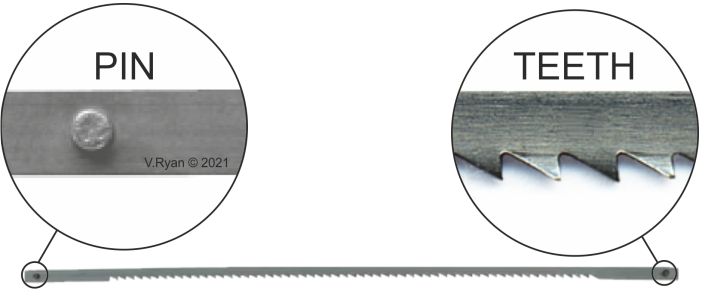
Coping saws are used for cutting a range of woods and are very useful for cutting unusual shapes or curves. In a modern workshop these shapes are normally cut using machine fretsaws. However, there are times when these machines are not available. Also, using a coping saw is a test of skill as it can be difficult to control and requires practice.





Alternative method - Using the coping saw to cut thin material:
Support the material on the surface of a bench, with one hand. The material must be held down firmly. The second hand controls the movement of the saw. Cutting takes place as the saw is pulled downwards.
When cutting curves, the supporting hand manoeuvres the material on the surface of the bench. The sawing motion, should always be in a straight and forward direction. It is the manoeuvring of the wood by the supporting hand, that determines the curve being cut.

QUESTIONS:
1. Draw a diagram
showing how the coping saw is held in the hand.
2. Draw a diagram showing how the
blade is held in position.
3. Explain how internal shapes can
be cut with the coping saw. Use notes and diagrams to describe this
technique.